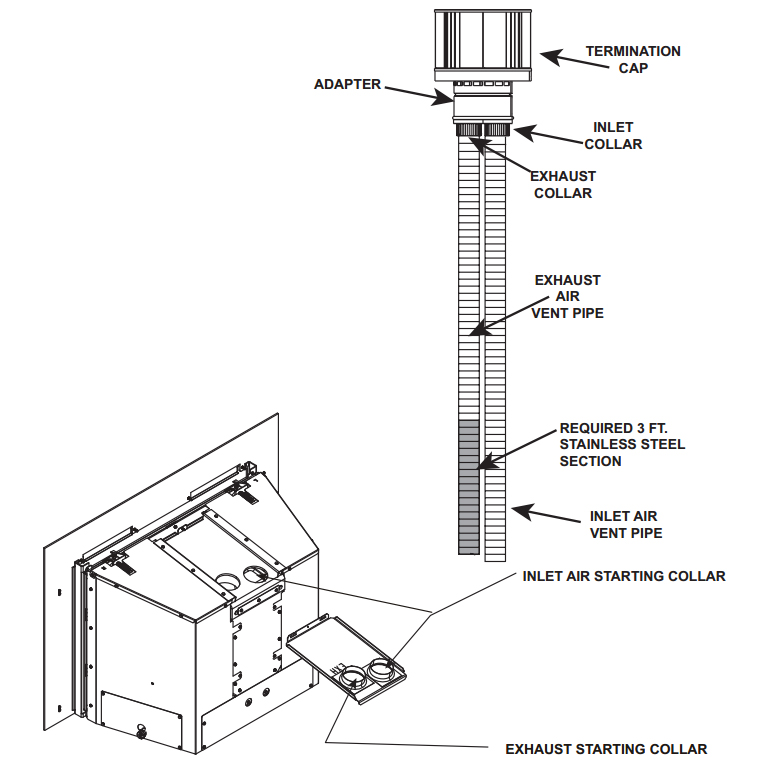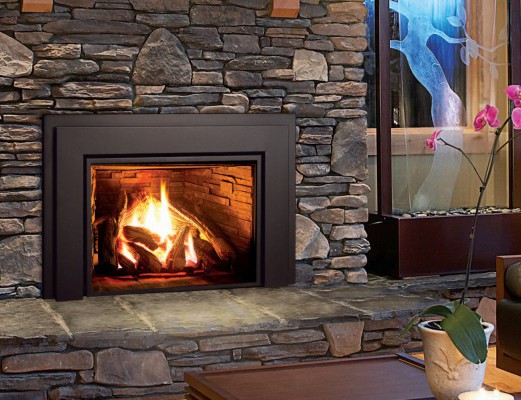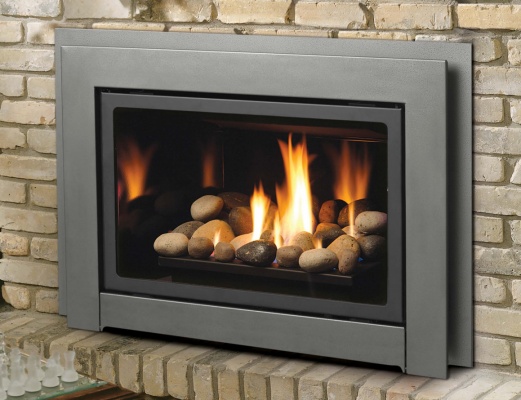Out of the three technologies for existing pre-fabricated or masonry wood-burning fireplaces, this is the most desired technology.
Direct vent gas inserts (a.k.a. DV gas inserts) feature a fixed piece of glass on the front that functions as glass doors and act as high efficiency secondary furnaces that are vented to the outside. All DV gas inserts are 70–85% efficient; they have optional blowers to aid the hot air circulation in the room and yet they do not have any of the aspects of the vent free technology that are often times sought as "negatives".
With a DV gas insert one doesn't have to sacrifice the good looks for the efficiency or efficiency for safety; DV gas insert looks great, has high heat output, low cost of operation, good air seal, no smell, and no by-products.
The glass front eliminates cold air from coming down the flue; it also prevents heated air or air conditioning escaping up the chimney. All gas products vent via two flex pipes that run the length of the chimney. One pipe brings fresh air to fuel the fire while the other takes the exhaust to the outside of the house. These flex liners can be an alternative to taking on expensive chimney repairs as they act as your chimney.

Direct vent insert with venting diagram courtesy of Heat&Glo
Notes on Venting of Direct Vent Inserts
Direct venting options are available for gas fireplaces, inserts, and stoves . Direct-vent products are sealed combustion appliances that do not interact with the air in your home except to efficiently provide abundant heat.
A two-pipe venting system carries the appliances burnt combustion gases to the outside for combustion purposes. The venting system is attached to the unit on one end and a termination cap on the other end, thus providing a sealed direct link between the unit and the outside environment.
In the case of a direct-vent fireplace, the venting system can terminate either vertically and/or horizontally between the unit and the termination cap. In the case of a direct vent gas insert, the venting system must run vertically through an existing chimney flue and be capped at the top of the flue.


